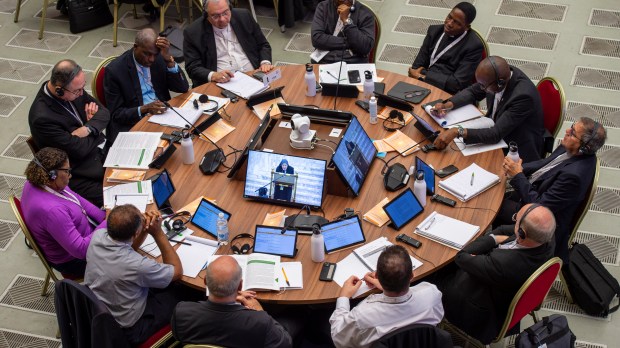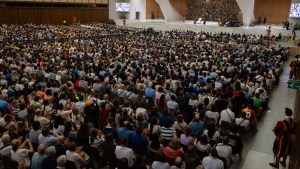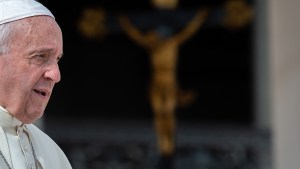“The lobbyist associations that were there have left. They’ve realized that we don’t have the same methods as they do: expecting concrete and immediate reforms from this synodal assembly is like trying to eat snails with a trowel.” So says one of the observers of the Synod on Synodality, held in Rome from October 4 to 29 with 464 participants from all over the world.
Members are now working on the topic of “participation” in the Church, and thus on sensitive issues linked to authority. In the meantime, those in charge of the Synod secretariat have already explained to the assembly the method for the summary document on which the ad hoc Commission has already begun work.
The Synthesis Report’s structure
The text will be relatively brief, and should contain three elements, in keeping with the synodal method. Firstly, it will highlight the points of consensus that have emerged from discussions by language groups and in general congregations, then the points of divergence. Lastly, it will propose avenues for reflection in the form of questions.
It will then be up to everyone to continue the reflection. This document will only conclude the first Roman phase of the Synod, which is due to have a second, final phase in October 2024. The organizers have made it clear on several occasions that the 2023 assembly is neither decision-making nor deliberative.
“We are well aware that this Synod will be evaluated on the basis of the perceptible changes that will result from it,” said Cardinal Jean-Claude Hollerich, the relator general for the Synod. But Rome has decided to take its time during this process, which began in 2021. The burning issues in the media — the blessing of homosexual couples, women’s access to diaconal or priestly ordination — do not seem to have obsessed the members of the Synod. Many reiterated that this Synod should not answer specific questions, but rather lay the foundations for a method of synodal discernment capable of tackling difficult issues in the future.
Back to the local Churches
Over the course of a year, in preparation for the next session, the Synthesis Report will be presented to dioceses and parishes for reflection. This is the leitmotif of this Synod: a continual back-and-forth between the grassroots — the People of God — and the hierarchy. These “open questions” which the synod fathers and mothers have identified, explained Paolo Ruffini, Prefect of the Dicastery for Communication, will require “further study from a canonical, theological and pastoral point of view.”
This synthesis report is neither a “final document” nor even the “Instrumentum Laboris [Working Document],” the Vatican has repeatedly reminded us. It is intended to allow the reflections to mature, and to report back to the Synod secretariat on local reactions and even “paths of experimentation and in-depth study,” Cardinal Hollerich explained. The aim is “to arrive ‘prepared’ for the second session, that is, loaded with a clearer awareness of the People of God as to what it means to be a synodal Church.”
A historic vote
The summary document will also be accompanied by a letter telling all Christians about Synod members’ experience over the past month. It’s an experience of intense listening and inner journeying, to which many enthusiastically testify. “It’s a method that works,” we hear behind the scenes of this meeting, most of which is taking place behind closed doors.
The presentation of the form that the Synthesis Report will take gave rise to the assembly’s first vote. This was a historic moment since, for the first time ever, 45 lay people — around 12% — were able to take part as full voting members. This vote, of great symbolic value, was a success: 335 votes in favor versus 11 against, out of 346 votes cast.



